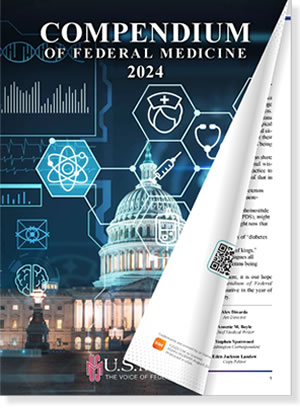WASHINGTON, DC — VA’s main website, va.gov, and several of its support systems have been the victim of bugs that have caused tens of thousands of VA benefits claims to go unprocessed.
But that wasn’t all that VA leadership revealed to Congress in September. They also said at least one of these system errors took longer than a decade to discover.
While VA says that the previous bugs have been fixed and systems are in place to identify new ones that crop up, legislators are concerned that this revelation is coming at a time when VA is placing ever-increasing importance on its online portal, including for accessing VA healthcare. Last month, VA announced to veterans that it is moving its patient-facing portal, My Heal the Vet to va.gov, with the goal being for veterans to be able to manage their healthcare at the same site they manage their benefits and other VA services.
“I absolutely agree that veterans should be able to manage their healthcare and benefits online, rather than wait on a call center to do everything. … But those systems and interfaces have significant bugs, and some of them are simply obsolete,” Rep. Matt Rosendale (R-MT) told VA leaders at a House VA Technology Oversight Subcommittee hearing last month. “VA.gov has gaps, and veterans are falling into those gaps. Nearly 100,000 veterans that we know of have been struggling with the va.gov bugs to access their benefits. In some cases, these problems have been happening for years.”
One of the bugs resulted in 32,000 veterans’ benefits claims submitted through the website being automatically rejected without their knowledge. Another dealt with veterans attempting to add or move dependents from their claims. Again, their request was rejected without informing them, resulting in over and underpayments of benefits.
The first bug seems to have been active since the va.gov site was revamped in 2018. The second bug might have been present since 2011, impacting nearly 56,000 over the last 12 years.
Of the benefits glitch, Rosendale said, “[Veterans] thought everything was normal. They just chalked it up to VA being slow on the delivery of their benefits. They didn’t even call and complain about it. And then it took VA seven months to notify them.”
More recently, 5,600 veterans attempting to submit PACT Act-related claims were met with error messages when the massive influx of last-minute claims caused the site to fail.
“Each of these incidents was somewhat different, but they indicate a troubling pattern,” Rosendale said. “Do these glitches extend beyond va.gov and into other areas?”
While VA could not assure legislators about the absence of other system bugs, officials said that they were working to review the site’s offerings and set up systems to catch future problems.
“We’re working urgently to create a comprehensive review of each of the products that va.gov offers, so we can get a real-time sense of the error rate,” explained Charles Worthington, VA’s chief technology officer. “One thing we learned because of these incidents is that we did not have a fast enough ability to identify these issues as they occurred, and that’s what we are really focused on with this first priority is getting better monitoring set up.”
Benefit applications are already being monitored, Worthington said. “And VA is also paying attention to the health enrollment form.”
“We’re seeing really positive results with that,” he added. “We have the ability to know with confidence that, once a veteran hits submit on va.gov, that transaction will be honored even if there’s a downstream error.”
The reason the dependents’ application error continued so long undetected is that, previously, if the request was automatically rejected, it would go into an online file and never be seen by a human processor. In 2021, VA thought they had identified the problem and began making sure all errors went through human hands. They created a back-up process where, rather than going into that online file, the claim will be forwarded to a processor and be worked in the same manner as paper filings.
VA officials assumed this solved the entirety of the problem. However, toward the end of 2022, they began hearing from veterans and veterans’ service organizations that the issue was more widespread and had been going on for years longer than previously thought.
“Then we set up a cross-functional team to tackle that issue and solve the bug that we determined existed,” explained VA Chief Information Officer Kurt DelBene. “In other cases, it was [much easier] to find the issue. The benefits claim application problem was found quite rapidly and resolved rapidly.”


